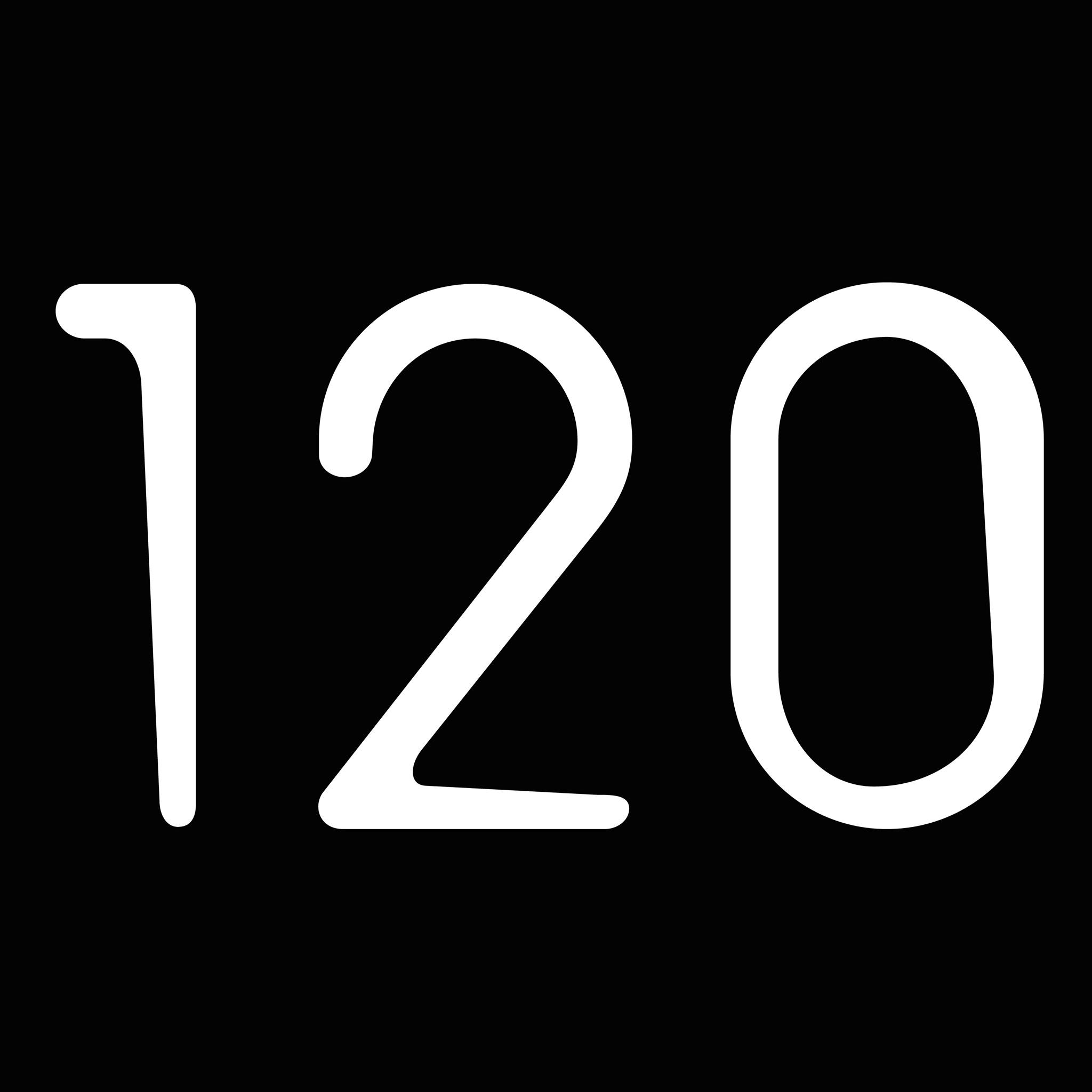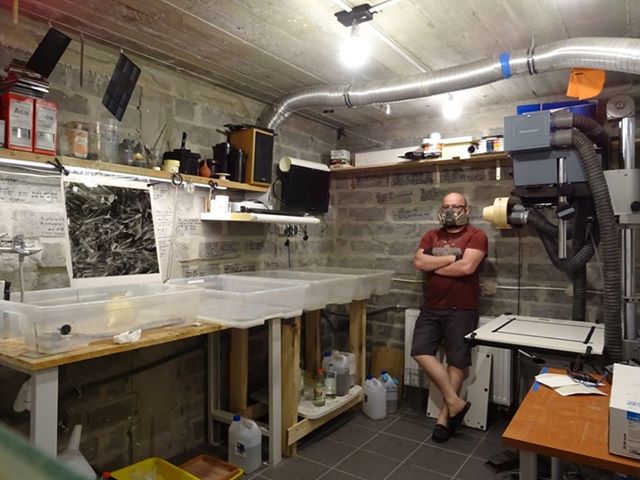Photo Love from Poland - Lukasz Nenko Fotografia Szlachetna
Lukasz Nenko is a 36 years old hobby photographer, husband to a lovely wife, and a father of an adorable 2 years old son.
Q1. Who is Łukasz Nenko? Tell us a little about you are and your photography?
I’ve been doing analogue photography for nearly 15 years. First attempts were made in the early 90’ with a Zenit that belong to my father. But the results were poor, and the developing of color film was expensive.
Later on I’ve started to use digital but got totally bored with hundreds of photos after each trip in the mountains or from any other party. So at the highest point where digital was nearing itself to kill analog, I’ve started do use BW film. Since then I’m doing nearly 99% of all photos with analog cameras. I love the whole process from taking photos until the ready print is drying. I’m not a master printer, and probably will never achieve those skills, but I’m still learning and hopefully I’m going in the right direction.
The starting point of my analogue journey difficult because everyone wanted to do only digital ‒ and it was pretty hard to gather information or chemicals. So I was buying my equipment in Germany and USA as the market there is well supplied. Through all these years I’ve explored thru street photography, alternative processes as wet plate etc, thru journeys into wild Romanian mountains, Ukraine, Morocco etc.
Q2. Is there anyone or anything that inspires your photography?
At this point of my life I like to take portraits and shoot the surrounding wilderness early in the morning. So every weekend I’m getting up around 4.30 - 5:00 AM, take three bags of equipment (35mm medium and large format) and go to catch the first light. And it’s not important if it rains or its -20C. Nearly everything can be a inspiration ‒ the light, the pose, a book everything. Only when I’m doing portraits I have to see “something” in the eyes. I’m not working with professional photo models ‒ I prefer “normal people”. That was wonderful in Romania ‒ the simplicity of the life, really great people, and their faces that were covered with layers of hard life.
Q3. Can you tell us more about this?
The event that you mentioned was a meeting with young photographers (mostly with no experience in analogue). It took place in Katowice in “photographer’s coffee”. I was supposed to talk about the basic information in about 1.5h ‒ and we ended after 4h. The people were really into it. And you can imagine what can a youngster feels if he has a DSRL and sees for the first time a 18x24 cm negative and the camera.
Q4. Tell us about this massive print and the print with the two women.
Large Prints: I’m trying to make always large print’s it’s pretty difficult to sell them but the end effect is remarkable. Blowup’s from 4x5 have such great quality its simply fantastic. I had to make my own developing tank’s to develop them but it was worth it. They are from ESG 6mm gals and are 1.5m long ‒ It takes ca 5L of chemistry for each step. The photo paper that i use for my daily work is the German TETENAL (Vario); it gives me the best contrast, and really great blacks. For the biggest prints I use a FOMA - it has a really great white base, and it's easy to get in Poland.
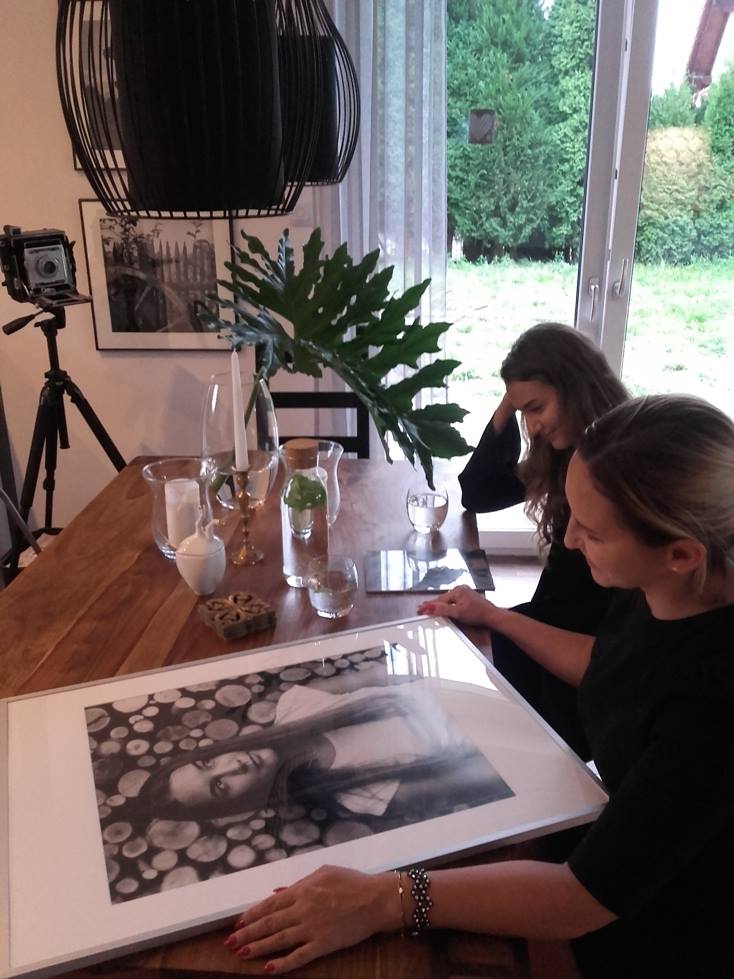
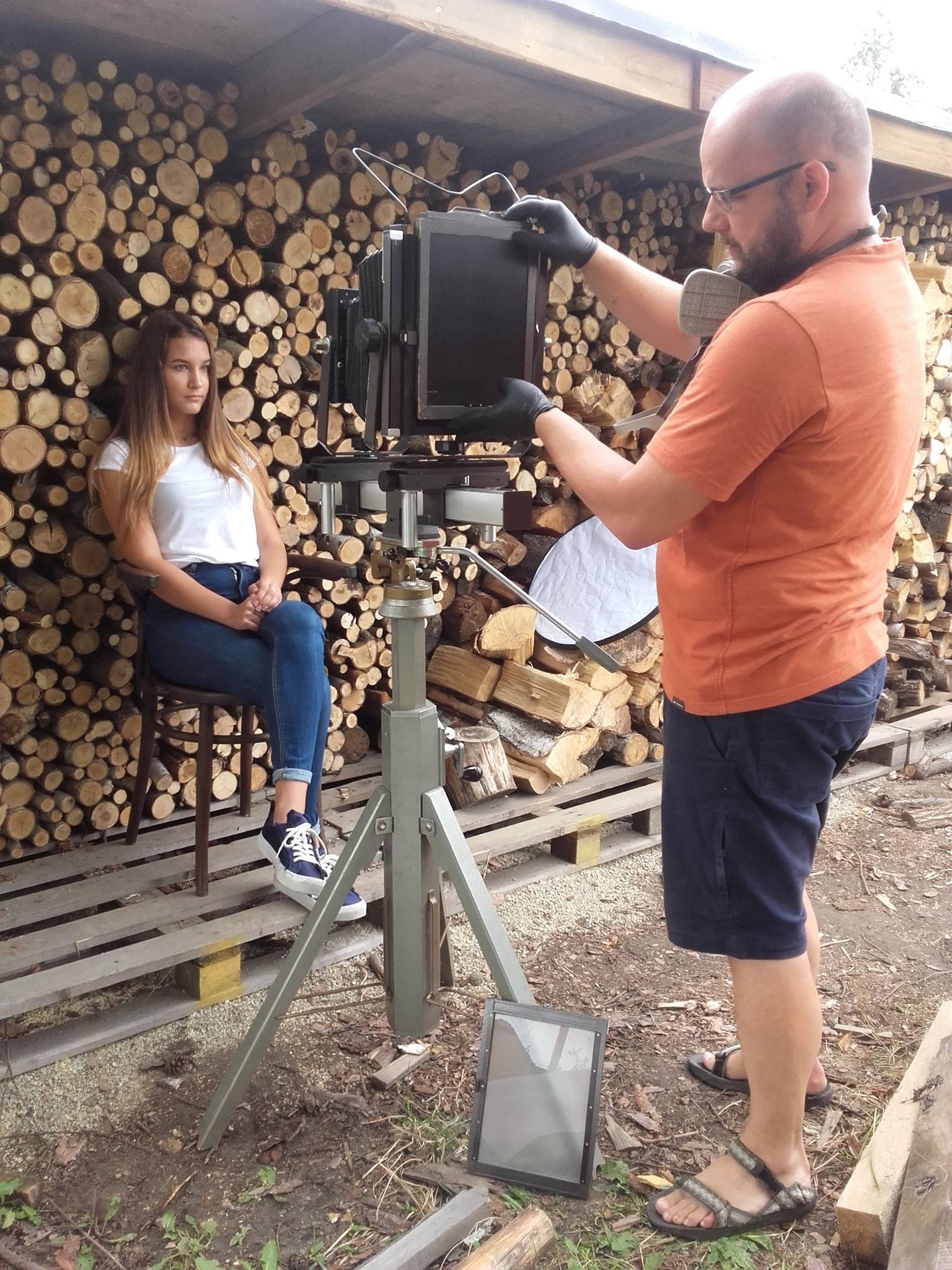
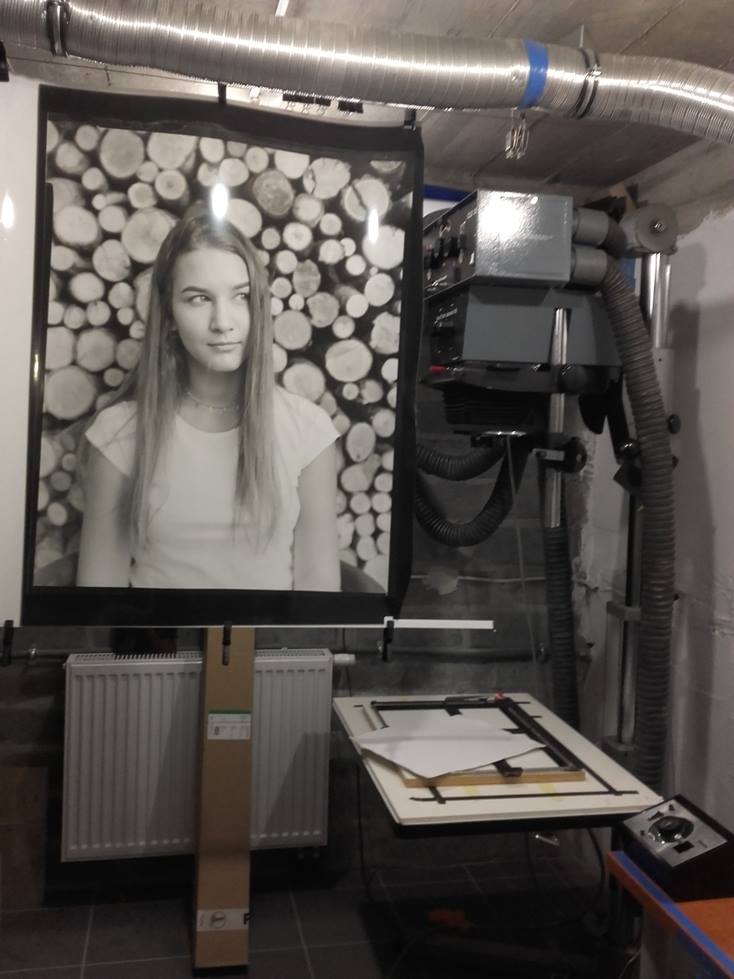
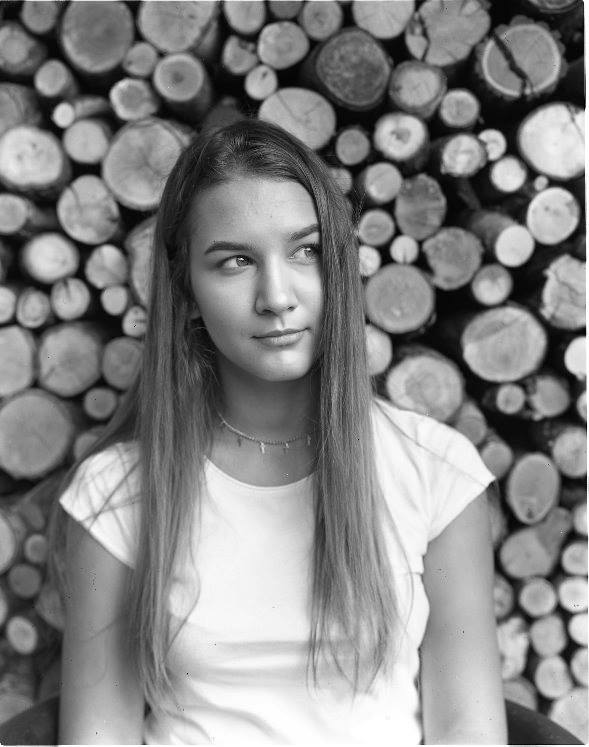
Regarding the two ladies. The younger one is Michaline she’s a singer (she was in “the voice of Poland”) and the other one is her mother. I’ve made some photos of Michiana ‒ you can see them also on my website www.fotografiaszlachetna.pl. The print I also a blowup from a 4x5 neg. I’ve made several more print from medium format for them around 60x60cm.
Q5. What project are you currently working on?
My newest project is to use a large negative (50x60 cm that was used in the 90s for newspaper printing) and I want do build the proper camera for that. At the moment I’m testing those materials (developing and printing).
Q6. If you visit Japan, what would you photograph?
I wish that one day I could visit Japan. I think that I would shoot a combination of street photography (I always wanted to see the fish market) and portraits. I would love to find older people in the countryside and take some pictures of them ‒ just I’ve done it in Romania. Who knows, perhaps find some clients in Japan - for printing blowups or portrait’s.
An important point would be to visit some stores with film cameras (we see often in European photos of such places) ‒ and you can’t find those in Poland. And the technical aspects.
Q7. What kind of equipment do you use?
As to the cameras ‒ I use mostly my Nikon FM2 and Canon EA1 for 34mm, a
Rolleiflex 3,5t and Pentacon Six for 120 film (I had a Zenza Bronica etrsi 645 this was the best one I’ve had. Combined with neopan 400/120 it was the best film ever. For large format, I use a Graflex Speedgrahic 4x5 (as the smallest camera), and a mentor Panorama 18x24cm for the static photos. The darkroom is equipped with three enlargers. Durst Laborator 5x7”, Omega Chromega D 4x5 and a Agfa from the early 60’s for 35mm. My darkroom is placed in the basement of my home ‒ we have planed it in the beginning as we planned to build our home. Its about 12 sq m, and I can enjoy the moment when I can listen to Sepultura or some other bands
loud enough to overcome the cooling fans and air-conditioning that runs over the wet table. I’m able to make 1,5x3m prints but there is a problem with getting such photo paper.
End.
Thank you, Lucasz for your time, and we hope our readers will see some exciting stuff coming from your work! Hope to see you in Japan!
Follow Lukasz here: https://www.facebook.com/FotografiaSzlachetna/
ルーカス・ケンコは36歳で写真家だ。愛する妻の夫であり、愛くるしい息子の父である。
15年近く前からアナログ写真家だ。
アナログ写真家としての最初の試みは90年代初期に父が所属していたゼニットカメラ
で生まれた。しかし、その結果は乏しかった。そして発達したカラーフィルムは高価だっ
た。その後、私はデジタルカメラを使い始めたが、何枚もの写真の後山へ行く各旅行か他
のパーティーに完全に退屈した。
そして、デジタルがアナログを殺し始めたとき、私は白黒フィルムを使い始めた。それ
から私は写真の99パーセントをアナログカメラで撮った。
私は準備ができている写真が乾燥するまでの全体の過程が好きです。私は完璧なプリン
ターでない上に、多分そのような技術は二度と発達しないでしょう。しかし、私はまだ学
んでいて、うまくいけば正しい方向に行ける。
アナログ旅の出発は難しい。なぜなら全員デジタルにのみしたいと思っている。情報を
集めるのがかなり難しい。
あなたが話していたのは大体がアナログの写真の経験が少ない若い写真家とミーティング をするものです。開催場所はポーランド南部の産業都市の「Photographer’s Coffee」で 行われます。私はここで90分ほど基本的な知識や技術について語るはずでしたが、実際に 終わったのはスタートから4時間後でした。なぜならば参加者が十分に興味を持ってくれ なかったからだ。あなたは若い写真家たちが初めて一眼レフを持ち、18x24cmのネガフィ ルムを見たときの気持ちが分かるだろうか。私はできるだけ大きな写真として印刷をして いる。これを売ること自体は本当に難しいのだが、仕上がりは本当に素晴らしいものなの だ。特に4x5から引き伸ばしをするのがシンプルにいいのだ。そのためにも私は現像タン クが欲しいし、それに見合った価値があると思っている。ちなみにその現像タンクはESG の6mmガロンの1.5mの直径なのだが、各段階で5リットルほどのカルシウムを使う。
二人の女性に関して言うと、若い方がMichalineで「The Voice of Poland」というポーラ ンドのテレビ番組で歌手として出演していた。もう一人はMichalineの母だ。また Michalineの写真を撮らせてもらっていて、私のウェブサイトに載せているので是非見て ほしい。( http://fotografiaszlachetna.pl/) 加えて自分は4x5のネガフィルムの引き伸ば しもしている。他にも中判カメラで60/60cmの写真も印刷している。
私の最新のプロジェクトは90年代に使われた50/60cmのネガフィルムを用い、それに適
したカメラを作りたいと思っています。その頃に現像やプリントを試行錯誤し始めました。
いつか魚市場をみに日本に行きたいと思っています。それは半分冗談ですが、主にストリー
トフォトグラフィとポートレートを組み合わせたものを撮るつもりです。以前、自分がルー
マニアでやったように是非地方の年長者を被写体として取りたいです。できたら日本の印
刷の引き伸ばしやポートレートについて詳しいクライアントがいてくれたら嬉しい限りで
す。
エウロペではよくフィルムカメラを扱うお店を見かけるのですが、日本のお店を訪れ、手
技面を目にすることも重要な目的の一つになっています。ポーランドではあまりそういっ
たお店を見かけないのです。
私が一番使っているカメラはNikon FM2とCanon AE1とRolleiflex 3.5tと120フィルム用
のPentacon Sixになります。でも一番自分に合っていたのはゼンザブロニカETRSi(645
判)でしたね。ネオパンの400/120と組み合わせるとそれはもう今まで一番のフィルムで
した。大判カメラだと4x5のGraflex Speed Graphicと18x24のMentor Panoramaを使い
ますね。暗室には3つの引き伸ばし機が設備されています。5x7のDurst Laboratorと4x5
のOmega Chromegaと60年代のAgfaのものを使っています。私が使っている暗室は私の
家の地下にあります。これは家を建てる当初から暗室にすると決めていました。約12m²の
広さで、セパルトゥラや他のバンドの音楽を、冷却ファンと濡れたテーブルの上にある空
調機の音をかき消すほどの大きさで聞く瞬間が私にとって至福の時なのです。1.5x3mの
印刷をしたいのですが、その写真用紙を手に入れることが難しく私の一つの悩みですね。
